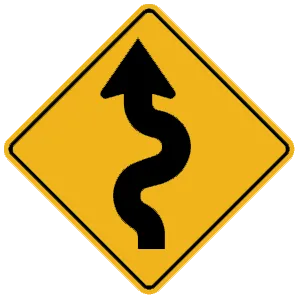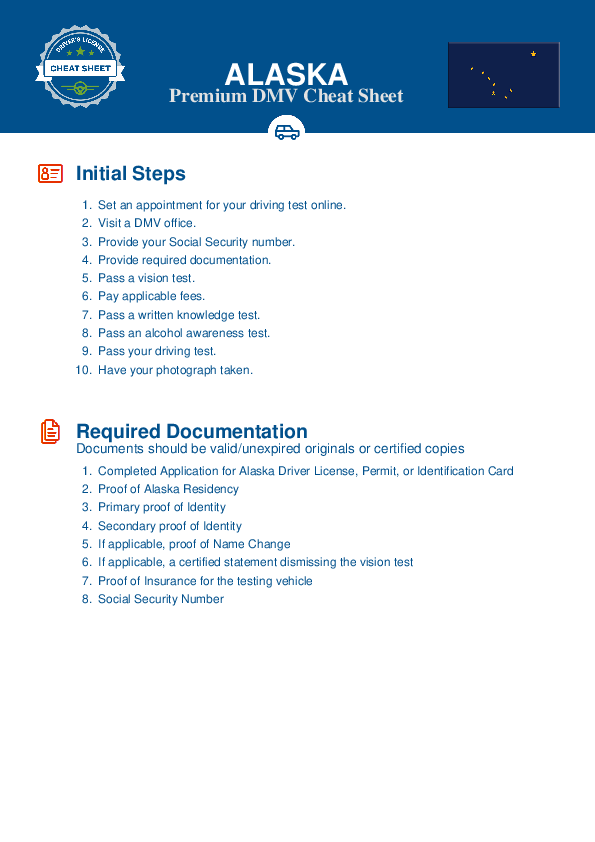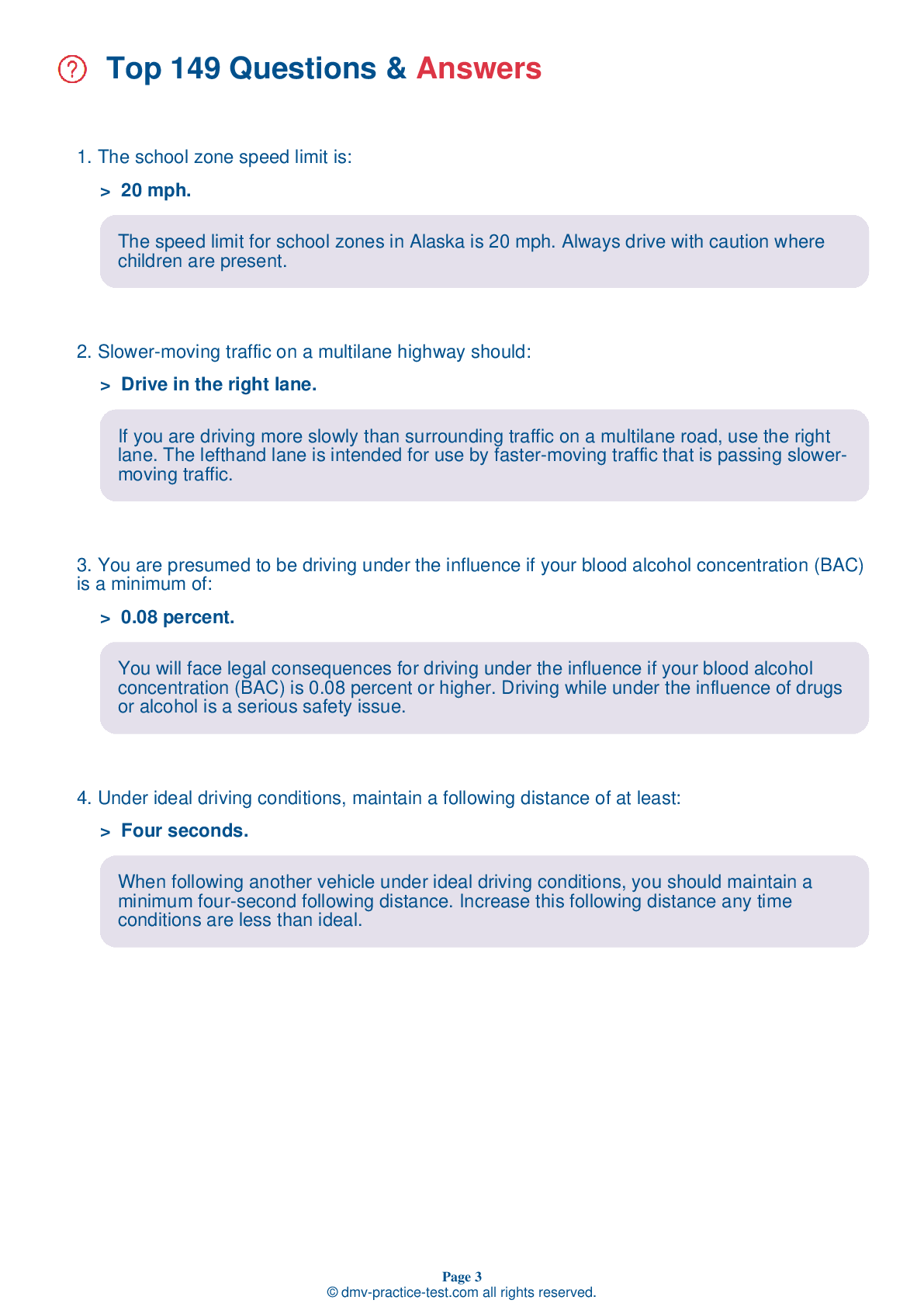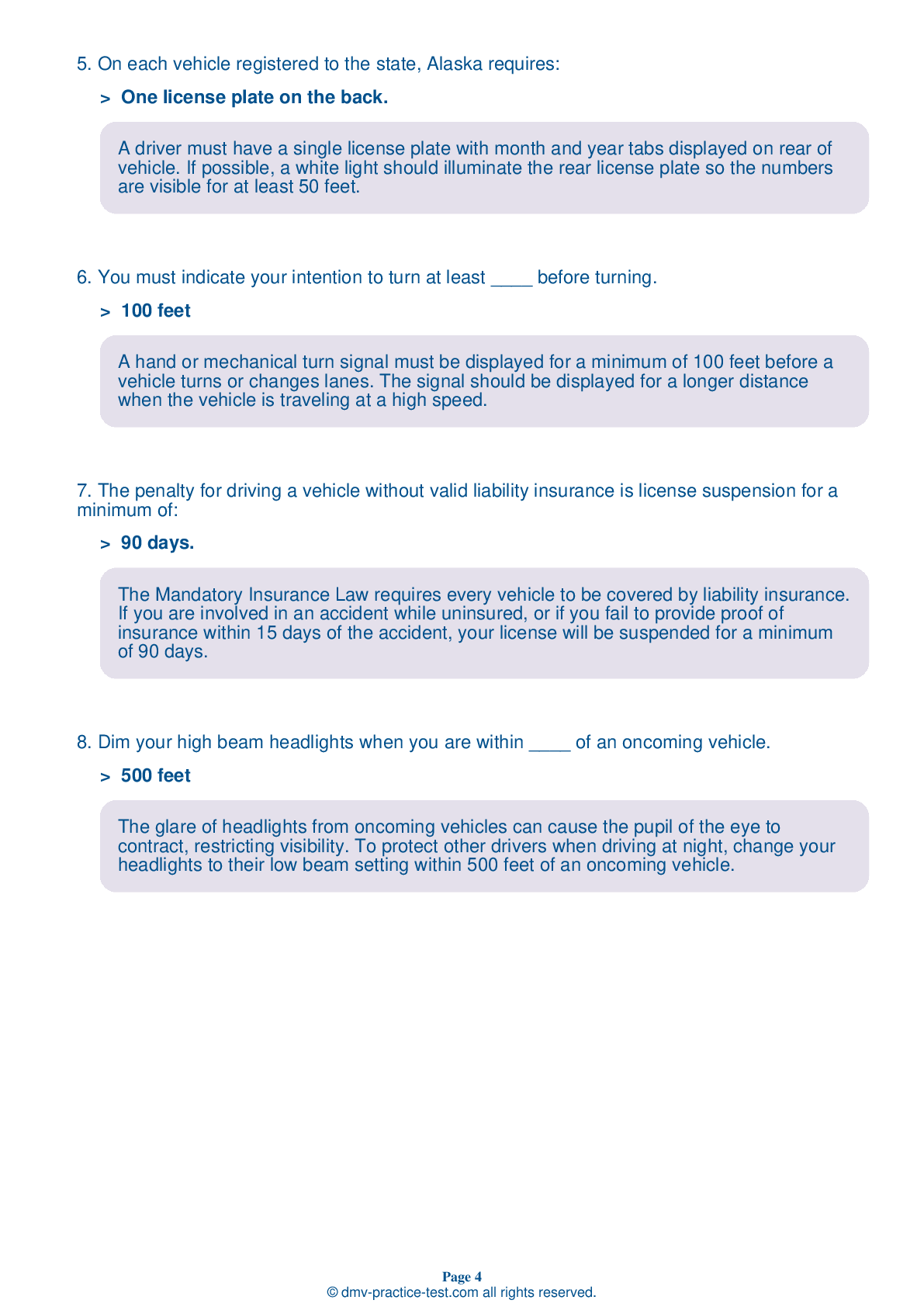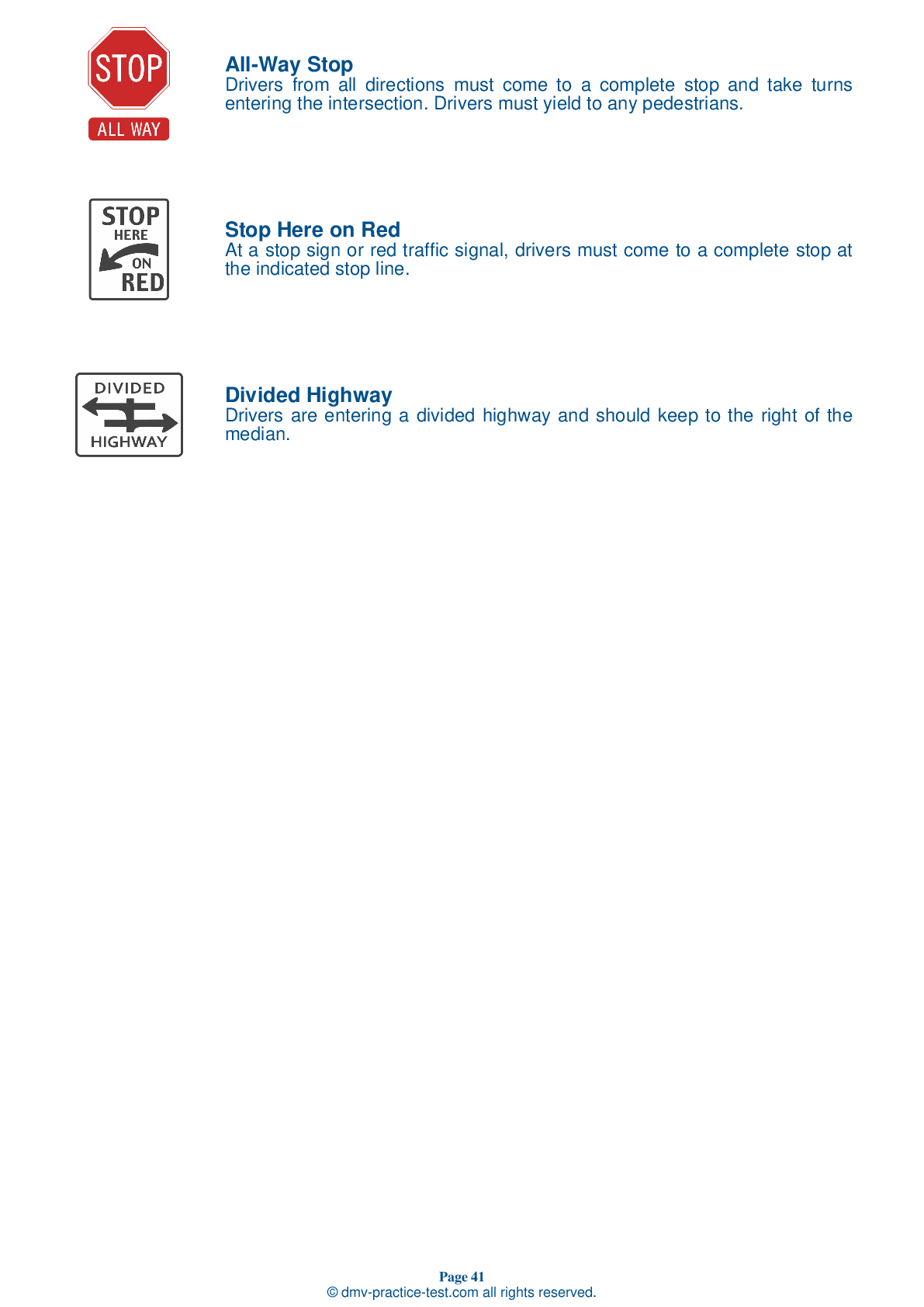FREE Alaska DMV Practice Test #12 Page 2 of 3
This Alaska DMV practise tests has just been updated for January 2025. It contains questions based on the most essential traffic signs and limitations from the Alaska Driver Handbook for 2025. Use actual questions that are very close (often identical!) to the DMV driving permit test and driver's licence exam to prepare for the DMV driving permit test and driver's licence exam.
To help you recall the topics, each practise test question includes a suggestion and explanation. The written component of the official DMV test will include questions about road rules, traffic signs, and driving statutes, as well as information from the Driver Handbook.
To get the required passing mark, you must correctly answer 16 out of 20 questions. Take our DMV practise exam to help you prepare for your Alaska instruction permit or driver's licence.
The DMV exam is available in multiple languages.
Using any form of testing aid will result in an automatic failure, and the DMV may take further action against your driver's licence, so don't do it.
7 . Before switching on the ignition, you should:
Develop a routine for entering and leaving your car. Before switching on the ignition, buckle your safety belt and see that all passengers do likewise.
8 . Before changing lanes on a multilane highway, you should:
Before changing lanes, you should look in your rearview and side mirrors to make sure no one is trying to pass you. You should also look over your shoulder to make sure that no one is in your blind spot.
9 . As you enter an intersection, the traffic light turns yellow. You should:
When a traffic light turns yellow, approaching drivers must slow down and stop. If you are already within the intersection, or are so close to the intersection that you cannot stop safely, you may proceed through the intersection with extreme caution.
10 . This road sign means:
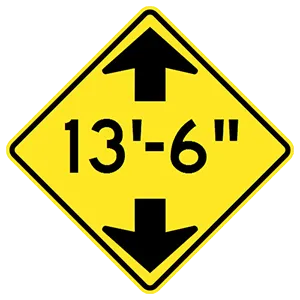
This sign warns that the overpass ahead has a low clearance. Do not proceed if your vehicle is taller than the height indicated (in this case, 13 feet, 6 inches).
11 . This sign tells you that:
